I assigned \$V_A\$ to your \$a\$ node. I mentally grounded your \$b\$ node. Given that preface, nodal provides:
$$\begin{align*}
\frac{V_A}{5\:\Omega}+\frac{V_A}{20\:\Omega+j 15\:\Omega}&=3\:\textrm{A}+\frac{j40\:\textrm{V}}{5\:\Omega}
\end{align*}$$
(There's no need to worry about the "middle node" voltage because it is on the other side of a current source or else you have to go past a voltage source to get there. Either way, it doesn't matter.)
I used \$j40\:\textrm{V}\$ for your voltage source because it's \$90^\circ\$ out of phase and this is achieved by simply multiplying by \$j\$. The current source is \$0^\circ\$ so a simple \$3\:\textrm{A}\$ is fine.
Solve for \$V_A\$:
$$V_A=\frac{3\:\textrm{A}+\frac{j40\:\textrm{V}}{5\:\Omega}}{\frac{1}{5\:\Omega}+\frac{1}{20\:\Omega+j 15\:\Omega}}$$
And then you know that:
$$\begin{align*}
I_0&=\frac{V_A}{20\:\Omega+j15\:\Omega}\\\\
&=V_A\cdot\frac{1}{20\:\Omega+j15\:\Omega}\\\\
&=\frac{3\:\textrm{A}+\frac{j40\:\textrm{V}}{5\:\Omega}}{\frac{1}{5\:\Omega}+\frac{1}{20\:\Omega+j 15\:\Omega}}\cdot\frac{1}{20\:\Omega+j15\:\Omega}\\\\
&=\frac{3\:\textrm{A}+\frac{j40\:\textrm{V}}{5\:\Omega}}{\frac{20\:\Omega+j15\:\Omega}{5\:\Omega}+1}\\\\
&=\frac{15\:\textrm{V}+j40\:\textrm{V}}{25\:\Omega+j15\:\Omega}\\\\
&\approx 1.14705882 + j0.911764706\\\\&\approx 1.46528455 \angle 38.4801982^\circ
\end{align*}$$
Rounded, the above matches the answer you are supposed to get.

